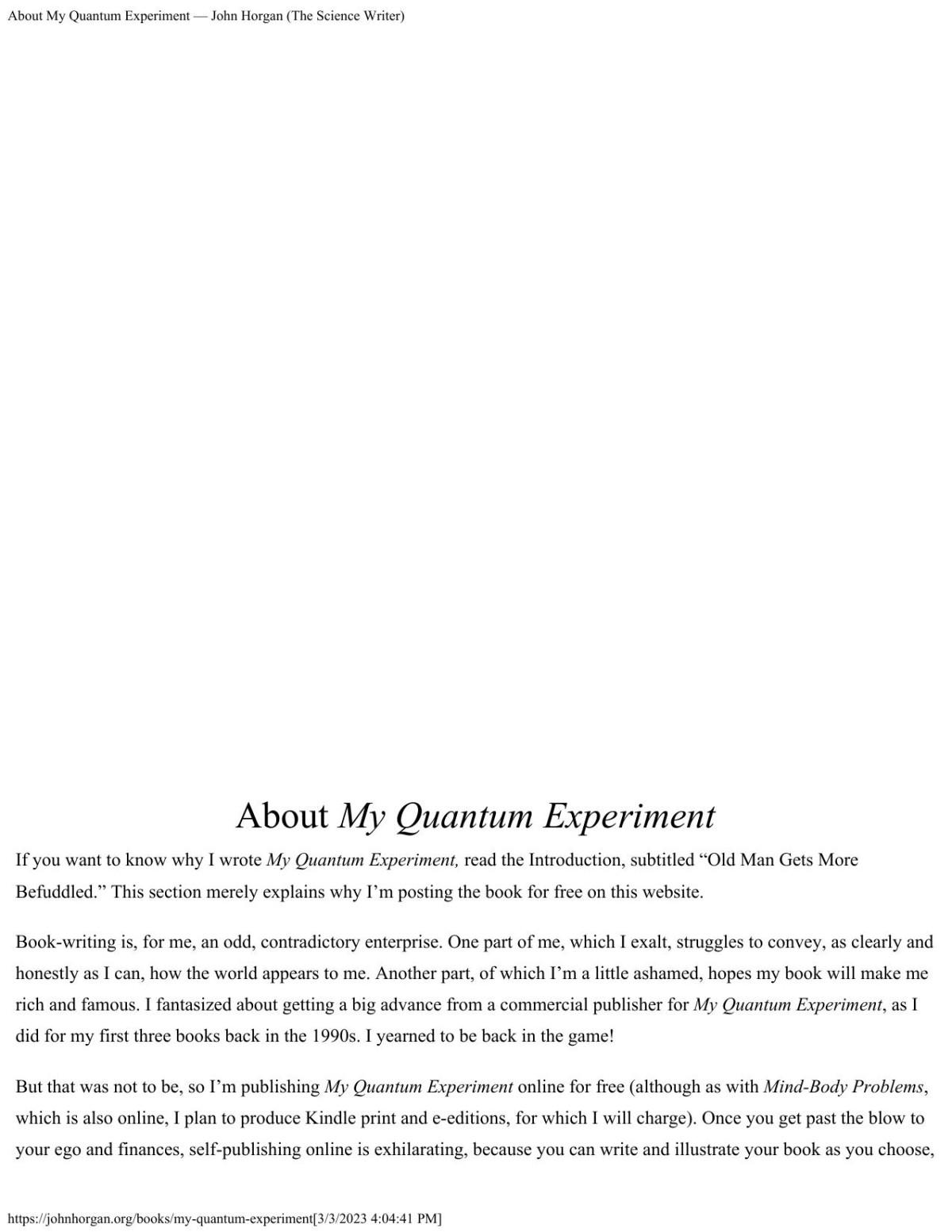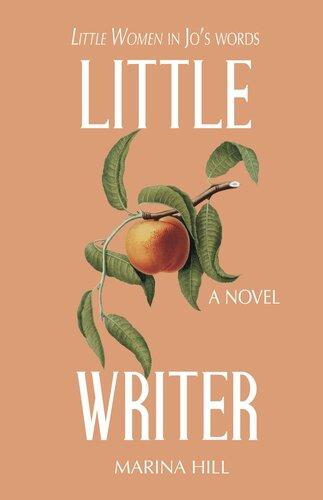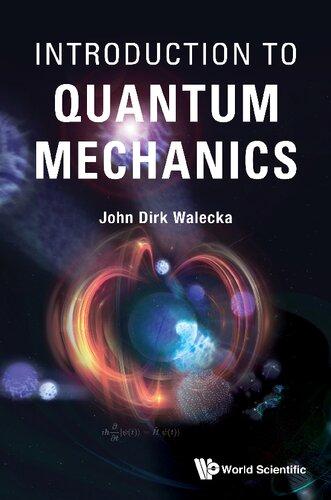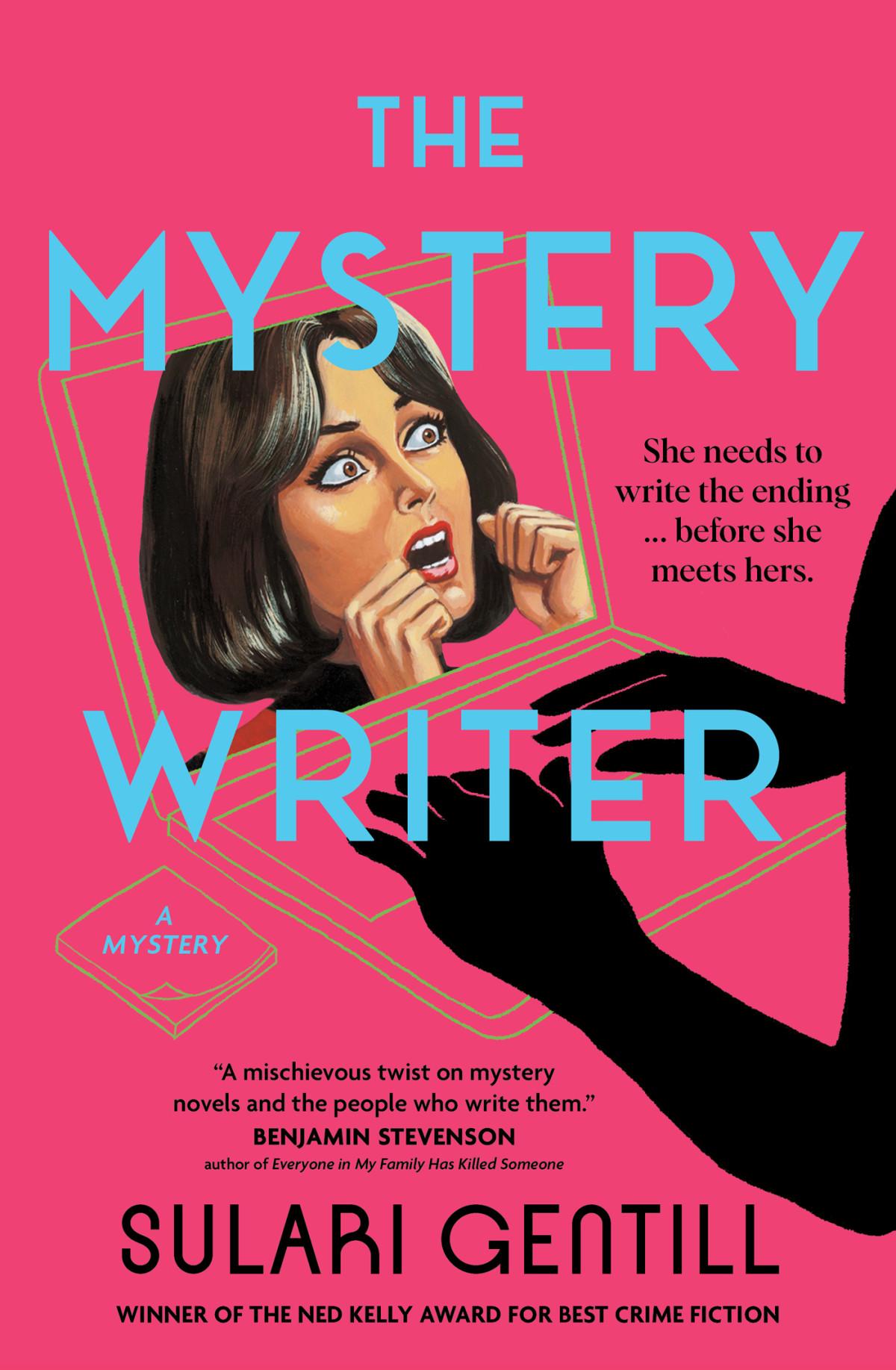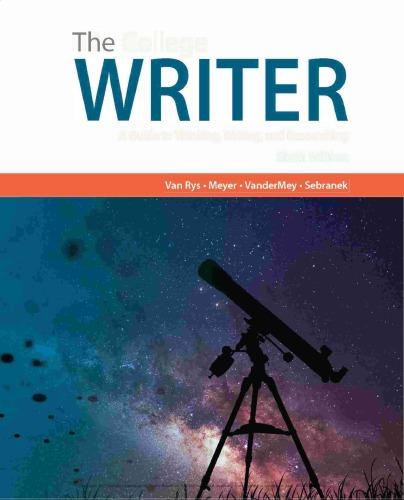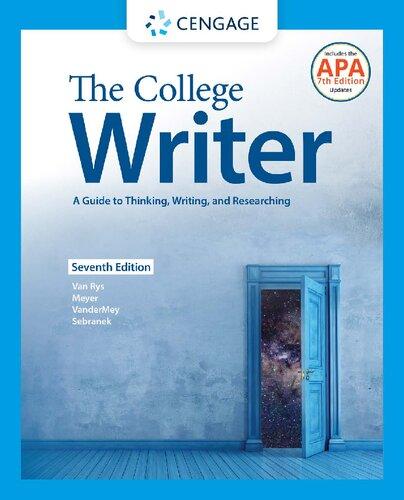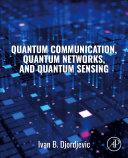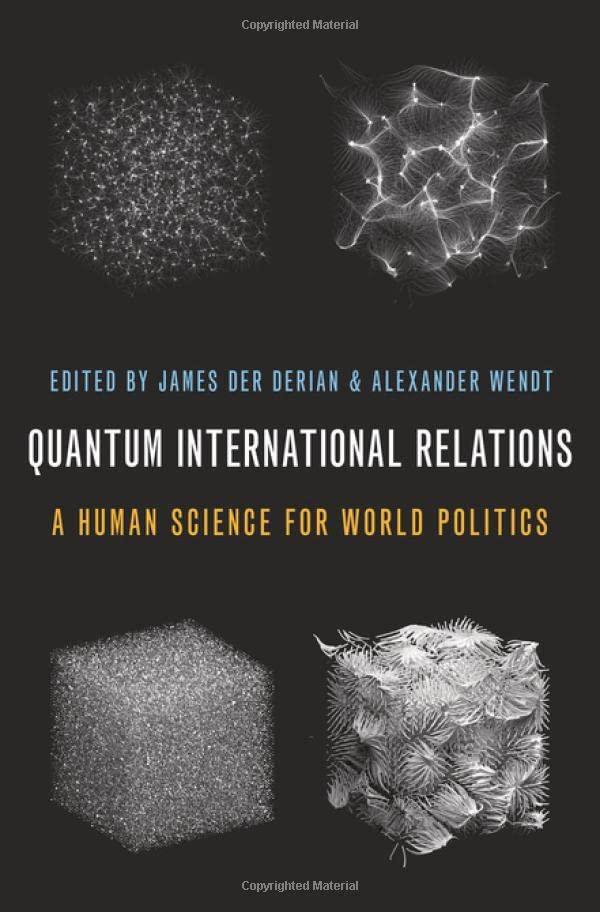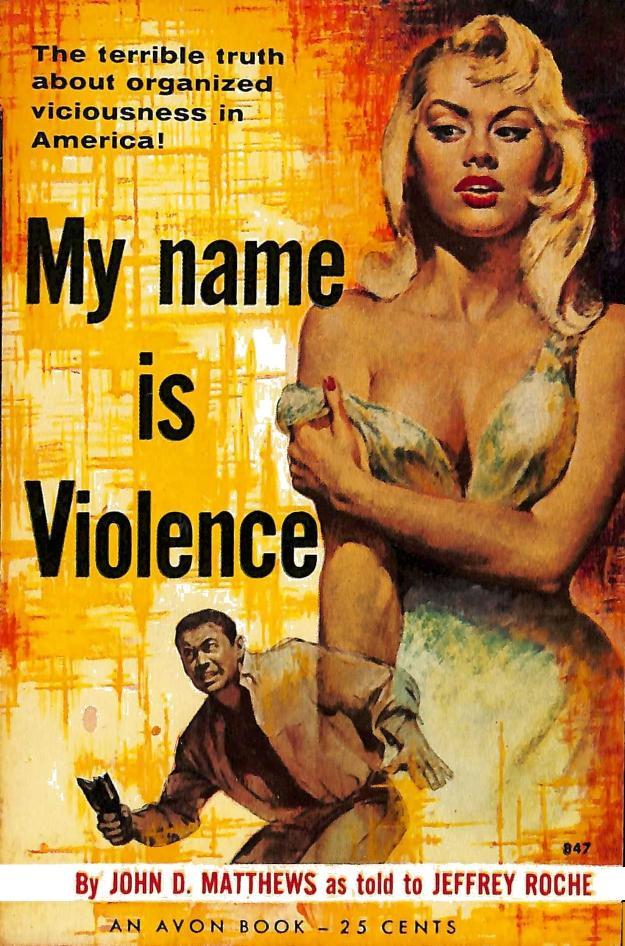INTRODUCTION
Old Man Gets More Befuddled
It was the fall of 2019, the pre-plague era, when my friend Robert Hutchinson asked me and my son Mac to trek with him through Namibia’s Fish River Canyon. Robert, a noble beast of a man, had been diagnosed with liver cancer, and he wanted to embark on one last adventure before it was too late. We planned to go the following spring, after my semester ended. The coronavirus dashed our plans, and so on May 17, 2020, I finished posting final grades for my three classes in a foul mood, cursing fate and wondering what to do on my summer break. I needed a project, something to distract me from the pandemic and the horror show of American politics.
Glancing at Facebook, I noticed that Sabine Hossenfelder, an iconoclastic physicist I’d recently brought to my school to give a talk, had released a video on quantum mechanics. She promised
https://johnhorgan.org/books/my-quantum-experiment/introduction[3/3/2023 4:04:54 PM]
CHAPTER THREE The Minus First Law CHAPTER FOUR I Understand That I Can’t Understand CHAPTER FIVE Competence Without About John Horgan About Cross-Check
Table of Content
s ABOUT MY QUANTUM EXPERIMENT INTRODUCTI ON Old Man Gets More Befuddled
CHAPTER ONE The Strange Theory of You and Me
CHAPTER TWO Laziness
that in ten minutes, with a little “simple” math, she would explain the difference between superposition and entanglement. Great, I thought, these quintessential quantum concepts have always puzzled me. But when I watched Sabine’s video, I didn’t get the math or technical terms. I felt dumb, as always when I try to grasp quantum mechanics.
Although I live and teach in Hoboken, New Jersey, I happened to be in New York City at the apartment of my girlfriend. I’ll call her Emily. Sensing my sour mood, she urged me to read a book she’d just finished: Big Magic: Creative Living Beyond Fear, by Elizabeth Gilbert. Normally, I shun self-help books. But Emily had just complained about my tendency to dismiss her advice, so I grudgingly opened Big Magic. To my surprise, the book absorbed me. Gilbert, a bestselling author, struggles like the rest of us. Curiosity is her most reliable means of overcoming fear and pain. She is happiest when curiosity transports her outside herself, and she becomes absorbed in learning something new.
Sabine Hossenfelder and me in Hoboken, New Jersey, in 2018. This book is kind of her fault.
Yeah, I thought, that’s what I need, to learn something new, something hard. But what? Immediately the answer came: I should learn quantum mechanics, really learn it, the way physicists learn it, with the math. The more I thought about this possibility, the more excited I got. Imagine how cool it would be to watch Sabine’s videos and know what she’s talking about! And hey, maybe I can get a book out of this!
I decided to run my idea by Emily. She is a veteran of the book-publishing racket, and she’s a hard-ass. She rejects most of my book ideas as non-commercial and dumb, which to her amount to the same thing. I felt nervous as I entered her bedroom, where she was lying on the bed studying a book on herbal remedies. As I explained my idea to her, emphasizing that it had been inspired by Big Magic, Emily nodded. This sounded like a fun pandemic project, and books in this genre—old guy learns Greek or guitar or some other new trick—can do well. [1]
Thrilled by her positive response, I began excitedly chattering about superposition, entanglement and other topics I hoped to master. Emily asked if she would have to listen to me blathering about physics for the next year; she hoped not (in vain, as it turned out). As she resumed reading her book, I thanked her for her encouragement and returned to the living room. I opened a notebook and began jotting down a plan of action for what I came to call my quantum experiment. This book covers the experiment’s first 18 months.
Why Quantum Mechanics?
Quantum mechanics is a contradiction, an embarrassment, really, lurking at the heart of modern
https://johnhorgan.org/books/my-quantum-experiment/introduction[3/3/2023 4:04:54 PM]
CHAPTER SIX
Reality Check
CHAPTER SEVEN
The Investment Principle
CHAPTER EIGHT
Order Matters
CHAPTER
NINE
The Two-Body Problem
CHAPTER TEN
Entropy
CHAPTER
ELEVEN
The Mist CHAPTER TWELVE
Thin Ice
CHAPTER THIRTEEN
Irony
EPILOGUE
Thanksgiving
knowledge. It is, on the one hand, a fantastically successful mathematical model of matter in motion. Since its inception in the early 20th century, quantum mechanics has evolved into a clade of theories describing events at the smallest and biggest scales, from the swerve of an electron to the outrush of the cosmos. These advances emboldened physicists to seek a unified theory, also called a final theory or theory of everything, that tells us how the universe, and hence we, came to be.
Quantum physics has supercharged chemistry and material science, and it has spawned gadgets that have transformed our lives, from hydrogen bombs to computer chips. Governments and companies are now funneling billions of dollars into quantum computing, which seeks to harness superposition and entanglement—those same confounding effects that Sabine Hossenfelder promised to teach me in ten minutes—to produce machines with unprecedented power.
And yet quantum mechanics makes no sense. It upends our basic assumptions about what is real and what is knowable. It challenges science’s axiomatic premise, that through meticulous investigations we can arrive at an objective understanding of nature. Experts keep trying to interpret the theory, to say what it means, but their conclusions are wildly divergent. Meanwhile, quantum quacks claim the theory corroborates their pseudo-scientific, pseudo-medical, pseudomystical claims. “Quantum” has become a pop-culture meme, a marketing cliché, which connotes something that seems like magic but is super-scientific and beyond your comprehension.
In my decades as a science writer, I have often reported on physics, and especially on the search for a unified theory, which thrilled me when I first learned about it. By the mid-1990s, I’d decided that unified theories are just science fiction with equations, because they cannot be experimentally tested. And all unified theories are quantum theories, which pose the same paradoxes as plain old quantum mechanics. Physicists’ quest for a final revelation, which solves the riddle of reality, is a dead end. So I argued in my book The End of Science
Although I hated admitting it, I often felt uneasy about being so judgmental. Who the hell am I to have opinions on physics? I majored in literature before going to graduate school in journalism. I rely on experts to translate their technical knowledge into terms I can understand. I occasionally toyed with the idea of studying real physics, with the math, but never seriously. That would be too hard and take too long, and I had too many deadlines to meet, not to mention my duties as a husband and father. Those were my excuses when I was a full-time science writer.
In 2005 I got a job teaching humanities courses (including science writing) at Stevens Institute of Technology in Hoboken. This gig pays the bills and leaves me with plenty of time to indulge my obsessions. I’m also divorced, my children grown and on their own. Emily and I, who met in 2009 after my marriage collapsed, keep separate apartments and value our time apart. The illness of my friend Robert, not to mention the Covid pandemic, also had me dwelling on life’s ephemerality. All of this is to say that the time was right in May 2020 for me to learn quantum mechanics—or to try, before it was too late.
A note on nomenclature: Although I might say quantum physics or quantum theory now and then,
https://johnhorgan.org/books/my-quantum-experiment/introduction[3/3/2023 4:04:54 PM]
I prefer quantum mechanics for two reasons. First, that phrase refers to the theory invented in the last century to account for experiments on matter and electromagnetism. That original, bare-bones theory, which excludes the effects of relativity, is my focus; but all the later, fancier quantum theories—including candidates for a theory of everything--share its puzzling features.
Second, I like the oxymoronic ring of quantum mechanics Mechanics sounds clunky, old fashioned, steam-punky, evoking pistons, sprockets, gears, a rigid determinism; whereas quantum is futuristic, esoteric, ethereal. Jam quantum and mechanics together and you embody the ironies of quantum mechanics.
About Doubt
The day after I watched Sabine Hossenfelder’s video on superposition and entanglement, I reached out to her and other experts for guidance on what I should learn. I spent the summer of 2020 studying physics textbooks and doing exercises in calculus and linear algebra. In the fall of 2020, I took PEP553: Quantum Mechanics and Engineering Applications, a course offered at Stevens Institute. Two classmates, Dean and Luis, became my study buddies.
In 2021, I crossed paths with Terry Rudolph, the grandson of Erwin Schrodinger, of the equation and cat. My encounter with Rudolph marked a turning point in my project. Rescuing me from a bout of gloom, when my experiment was on the verge of collapse, Rudolph taught me quantum mechanics by teaching me quantum computing, a field in which he is deeply involved. Meanwhile, I filled a half dozen 8-by-11-inch notebooks with what Emily describes as my “scary Unabomber handwriting.” This book is based on these notebooks, which record my thoughts, second thoughts and Nth thoughts on my studies.
When my experiment began, I had a few basic questions in mind: Could an oldster like me, starting more or less from scratch, learn the mathematical principles underpinning superposition and other quantum puzzles? If so, would that knowledge alter my views of quantum mechanics and related theories? Would it make me reconsider my bleak take on physics’ future? The answer to these questions turned out to be yes.
A sample of what my girlfriend calls my “scary Unabomber writing.” In this notebook entry, dated February 6, 2021, I wonder whether investigations of quantum mechanics will lead to an infinite regress of what physicist Terry Rudolph calls “mist” (explained in Chapter Eleven). EOS stands for “End of Science.”
I’ve learned a lot about quantum mechanics. When I re-watch Hossenfelder’s video on superposition and entanglement now, I get it. That is, I
https://johnhorgan.org/books/my-quantum-experiment/introduction[3/3/2023 4:04:54 PM]
recognize the terms she utters and even the equations she displays. She no longer loses me when she says that the wave function, symbolized by Ψ, “is a complex valued function and from its absolute square you calculate the probability of a measurement outcome.”
I can explain—and will explain, later in this book--how superposition and entanglement are linked. Readers will become familiar with other concepts: imaginary and complex numbers; matrices and vectors; Euler’s identity, the three-body problem and Bayesian probability. I’ll tell you about conservation of information, otherwise known as the minus first law; and the principle of least action, which I call the law of laziness. I’ll delve into qubits, the fuzzy chunks of information that make quantum computing possible.
When my experiment began, Sabine Hossenfelder predicted that someday an interpretation of quantum mechanics would be named after me. She was kidding, but I decided to take her seriously. Toward the end of this book, I present my very own interpretation of quantum mechanics.
But this book, I must warn you, isn’t about quantum mechanics, per se, so much as it is about my efforts to understand the theory. Most physics authors present their conclusions as glossy finished products, omitting their struggles and doubts. This book is about struggle and doubt. I tell the story of my quantum experiment as a memoir, in the present tense, with all the emotional ups and downs.
I riff on connections between physics and happenings in my personal life and the wider world. In the first year of my project, my father died. Covid-19 swept across the planet, killing millions of people. A contentious Presidential election wracked my country. A white policeman killed a black man in Minneapolis, triggering protests nation-wide. The cancer of my friend Robert surged and ebbed. Winding sinusoidally through all of this was my relationship with Emily.
My buddy Robert Hutchinson. We never did make it to Namibia. Photo: Ruth Hutchinson.
I began my experiment hoping to get away from politics, the pandemic, the cacophonous human shit show. Not to mention the hassle of love and friendship. I wanted to retreat into the austere realm of physics, where impersonal forces push particles back and forth. But my project kept dragging me back into the messy human world. Quantum mechanics forces us to ask, What is real? Life kept reminding me that suffering is real, our yearning for justice and freedom is real, love is real, even though these things are hard to find in physicists’
https://johnhorgan.org/books/my-quantum-experiment/introduction[3/3/2023 4:04:54 PM]
https://johnhorgan.org/books/my-quantum-experiment/introduction[3/3/2023 4:04:54 PM] formulas.
I obsess, especially, over death. Several friends, when I disclosed this theme, asked, How is death related to quantum mechanics? They seemed genuinely puzzled. Their puzzlement puzzles me, because death, to my mind, is so self-evidently related to everything. Whether or not we consciously brood over it, death is always there; it is the backdrop for all our ventures, including our attempts to comprehend and control nature. And I’ve been brooding over death quite consciously lately. Death and Quantum Mechanics could serve as a title for this book.
I could cite quantum interpretations to justify my subjective narrative style. QBism (pronounced like the art movement) says quantum mechanics isn’t about reality; it is about our beliefs about reality. Agential realism insists that quantum mechanics must be understood within its cultural, political and ethical context. The relational interpretation says relations between things, and not things in themselves, underpin everything.
But well before I encountered these ideas (which I’ll tell you more about later), I had decided that when you try to interpret scientific theories, to say what they mean, you have left objectivity behind and entered the realm of analogy and metaphor, of art, where subjectivity reigns. In this realm, feelings matter. Our fears and desires can obscure the world, yes, they can mislead us, but they can also guide us toward truth. Feelings can even embody truth—or so I came to suspect during my quantum experiment.
Weirdness
While I have learned a lot during my experiment, I have also unlearned a lot. I’ve always been obsessed with the limits of knowledge, with what we can and can’t know. My struggle to understand quantum mechanics makes me wonder whether we understand anything. I’ve become acutely aware of how language, including mathematics, the language of numbers, conceals as it reveals. Another warning: This project has rekindled my youthful passion for poetry, which expresses the inexpressible.
Quantum mechanics is often described as “weird,” meaning strange, inexplicable, improbable. But Newton’s theory of gravity is pretty weird, too. Chunks of matter separated by vast spans of space tug on each other? Come on, tell me another one. And Einstein’s theory of gravity, which replaced Newton’s, renders space and time pliable. Totally weird. [2]
Far, far weirder are the things these theories describe. The universe, the Milky Way, the Sun, Earth and Moon. The Hudson River, which I can see outside my window when I’m home in Hoboken. The Freedom Tower, rising above the Manhattan skyline where the Twin Towers once stood. The ferries churning back and forth across the river. Weirdest of all are the creatures on those
ferries--and that should not be surprising. We are, after all, made of quarks and electrons, weird quantum stuff.
Ikkyu, a 15th-century Zen sage, defined enlightenment as paying attention. The biggest barrier to paying attention is habituation. We get accustomed to the world. We plod through our lives like automatons, even when it comes to tasks that are meaningful to us. Finish grading this batch of freshman papers. Buy your girlfriend chocolate for Valentine’s Day. Email your friend to ask how his new chemo is going.
Sunrise as seen from my apartment in Hoboken. That is the Freedom Tower rising above the Hudson River and Manhattan skyline.
I’ve gone to great lengths to disrupt my habituation. I’ve chanted mantras on a Buddhist retreat, chewed peyote on a Navajo reservation, drunk ayahuasca on a cliff overlooking the Pacific. These interventions usually have fleeting effects. Studying quantum mechanics has disrupted my habituation in a way that feels permanent. The theory is riddled with contradictions; it mocks our confidence that we know anything about anything. If habituation is the problem, quantum mechanics is the solution, precisely because it defies solution.
My son Mac, who climbs rocks, says rock-climbers separate experiences into three categories:
1. Fun when you’re doing it and fun to remember.
2. Not much fun when you’re doing it but fun to remember.
3. Not fun when you’re doing it and not fun to remember.
Type-3 experiences usually involve serious injury or death. Hard-core climbers, Mac informs me, think type-3 experiences are the most fun of all, if you define fun as profoundly meaningful. Compared to scaling El Capitan, which my son has done, or trekking through Namibia’s Fish River Canyon, my project has been humdrum. For the most part, I lie on my couch reading and writing. Weather permitting, I might take a collapsible chair into a park and study Quick Calculus as children cavort around me. Also, I have studied quantum mechanics in its most rudimentary form. Thousands of youngsters at my school and elsewhere learn the theory with little fuss year after year.
My quantum experiment has nonetheless been one of my life’s great adventures. Now and then I felt too old, stupid and depressed to continue—for example, while trying to do homework for PEP553: Quantum Mechanics and Engineering Applications Maybe those were type-2 experiences. But for the
https://johnhorgan.org/books/my-quantum-experiment/introduction[3/3/2023 4:04:54 PM]
That red speck is my son Mac climbing El Capitan in 2018. Fail to learn quantum mechanics, you feel dumb. Fail to climb a mountain, you can end up dead. Photo: Tom Evans of El Cap Report
most part this project has been fun, and more. It has given me a sense of purpose when the world seemed to be falling apart.
More than a year after my experiment began, Bob Wright, a fellow seeker and writer, invited me onto his podcast, Meaningoflife.tv. Wright, author of the bestseller Why Buddhism Is True, has found his path. But he has always been curious about quantum mechanics, and he wanted to know if I’d reached any grand conclusions about it. I told Bob that the more I ponder quantum mechanics, the more befuddled I get, and not just about quantum mechanics. Wright, a canny fellow, said with a sly grin that “Old man gets more befuddled” doesn’t seem like a very happy ending for my project. Yeah, I replied, but that’s not a bad description of my experiment: Old man gets more befuddled. [3]
That’s not a bad description of my life, either, it occurs to me now. And if befuddlement isn’t a happy ending, that’s because it’s not an ending. Befuddlement keeps me going, it nudges me out of my torpor, it forces me to pay attention to this weird, weird world before it’s gone.
Notes
1.A savvy agent, who tried to sell this book for me, advised me not to disclose that I began my quantum experiment with the goal of writing a book about it; readers would find that motive impure. But I am a writer, so my motives are always impure. Whatever I do, whatever happens to me, I’m thinking, Can I write about this? That’s why this chapter includes the exchange between me and Emily about whether my project might become a book.
2.Spooky Action at a Distance, the 2015 book by physics writer George Musser, does a great job showing how Newtonian gravity and other pre-quantum theories anticipate the paradoxes of quantum mechanics, such as nonlocality.
3 The savvy agent (see note 1) agreed with Bob Wright that “old man gets more befuddled” isn’t a great payoff for a book with commercial aspirations. Why would anyone want to read a book by an author who admits he is befuddled? Good question.
← Previous
→
Drawing by Nikita Petrov
https://johnhorgan.org/books/my-quantum-experiment/introduction[3/3/2023 4:04:54 PM]
Introduction: Old Man Gets More Befuddled — John Horgan (The Science Writer)
support my writing simply by reading and reacting to it—and telling others about it. If you want to donate to a worthy cause, check out WORLDBEYONDWAR.ORG
Copyright © John Horgan. All rights reserved.
https://johnhorgan.org/books/my-quantum-experiment/introduction[3/3/2023 4:04:54 PM]
CHAPTER ONE
The Strange Theory of You and Me
May 18, 2020. In a state of excitement tinged with dread, I reach out to five quantum experts with whom I am on friendly terms. Three are physicists, one is a philosopher of physics with a doctorate in physics, another a journalist with a master’s in mathematics. Perhaps I should wrap “expert” in scare quotes, because no one really understands quantum mechanics, or so says supreme expert Richard Feynman. But my advisors know much, much more about quantum mechanics than I do. I send each expert a version of this email:
Dear [____],
https://johnhorgan.org/books/my-quantum-experiment/chapter-one[3/3/2023 4:04:28 PM]
About John Horgan About Cross-Check
Table
of Content s ABOUT MY QUANTUM EXPERIMENT INTRODUCTI ON Old Man Gets More Befuddled
CHAPTER ONE The Strange Theory of You and Me
CHAPTER TWO Laziness
CHAPTER THREE The Minus First Law
CHAPTER FOUR I Understand That I Can’t Understand CHAPTER FIVE Competence Without
I've often fantasized about learning quantum mechanics, not in a half-assed, metaphorical, science-writerly way but really, with the math. Now I’m thinking of actually doing this. It would be in the genre of the old guy trying to stave off mortality, except instead of climbing Everest I learn what a wave function really is. I was a literature major in college, who took one course in physics and another in calculus, forty years ago. Two questions: 1. Do you think my project is feasible? 2. If so, how should I proceed?
Best, John
Part of me imagines the advisors reacting: Fat chance, you old fool. You only think you can do this because you’re dumb. If you were smarter, you’d know you’re not smart enough to pull this off. If they’re really mean, they might encourage my project to have the pleasure of watching me flop. No, I’m being paranoid. Two physics professors emphasize that I’ll need lots of mathematics. I’ll require, especially, a grasp of calculus and linear algebra. I studied algebra in high school, but I’m pretty sure we didn’t cover linear algebra. I took a calculus course in college 40 years ago, but I remember virtually nothing from it, except that it’s about rates of change of rates of change. Something like that.
Sabine Hossenfelder and Jim Holt give me the kind of specific advice I’m seeking. Hossenfelder is the physicist whose video on entanglement and superposition inspired this project. Holt, technically, is a mere journalist, like me, but he has a master’s in mathematics, and he’s intimidatingly clever. Hossenfelder and Holt independently recommend the same book: Quantum Mechanics: The Theoretical Minimum by physicist Leonard Susskind and a co-author. The book’s subtitle says it delivers What You Need to Know to Start Doing Physics. Holt says Susskind provides the math needed to get entanglement, uncertainty and other key quantum concepts; nothing extraneous, hence the subtitle.
A blurb from Science News says that “if you’re banished to a desert island” with Susskind’s book, you could eventually “master quantum mechanics.” The Covid-19 pandemic has banished me to my apartment in Hoboken and Emily’s in Manhattan. Our apartments are like desert islands with couches, air conditioning and internet service. Although the pandemic has temporarily (I hope) shut down ferry service between Hoboken and Manhattan, I can reach Emily via the PATH train, which scoots under the Hudson.
I love the irony of learning quantum mechanics from Leonard Susskind, with whom I once tangled. Before I describe our spat, a little context. As any pop-physics book will tell you, modern physics is now split between quantum theory, which accounts for electromagnetism and the weak and strong nuclear forces; and general relativity, which describes gravity. Quantum theory and relativity are expressed in different mathematical languages, which are hard to translate into each other. The theories depict reality in different ways: the quantum world is lumpy, the relativistic one smooth and continuous.
Physicists yearn for a single, “unified” theory that accounts for all the forces. Just as electricity and magnetism are two aspects of a single force, so electromagnetism, the nuclear forces and
https://johnhorgan.org/books/my-quantum-experiment/chapter-one[3/3/2023 4:04:28 PM]
CHAPTER SIX
Reality Check
CHAPTER SEVEN
The Investment Principle
CHAPTER EIGHT
Order Matters
CHAPTER
NINE
The Two-Body Problem
CHAPTER TEN
Entropy
CHAPTER
ELEVEN
The Mist
CHAPTER
TWELVE
Thin Ice
CHAPTER
THIRTEEN
Irony
EPILOGUE
Thanksgiving
gravity are manifestations of a single primal, cosmic force. So physicists assume. Decades ago, they discovered a promising unified theory, which holds that all particles and forces, and even space and time, stem from tiny strings wriggling at the bottom of things. String theory, as it came to be called, implies that there are many extra dimensions of space in addition to the three we inhabit.
I first learned about string theory in the 1980s, when my career as a science writer was beginning, and the hutzpah of it dazzled me. Enthusiasts called string theory a “theory of everything,” because it might help explain how our universe came to be, and why it takes a form that allows for our existence. Amazing! Physics seemed poised to replace religion once and for all as a source of answers to our deepest questions.
At some point, I realized that physicists believe in string theory because of its mathematical virtues, and especially its symmetries, rather than evidence from experiments. Something is symmetric if it looks the same when you transform it by, say, rotating it. Just as you can see the spherical, three-dimensional symmetry of Earth by rising far above its surface, so you can see the symmetry of our four-dimensional spacetime from the perspective of even higher dimensions. So string theorists allege. Unfortunately, the infinitesimal strings postulated by string theory, as well as the extra dimensions, lie far beyond the reach of any observations. That’s why I began bashing string theory in the 1990s. If it can’t be tested, I asked, is it science?
Okay, back to my run-in with Susskind. In a 2005 essay for The New York Times, “In Defense of Common Sense,” I chided scientists for denigrating common sense as a guide for understanding reality. Yes, quantum mechanics and general relativity seem to violate common sense, but that doesn’t mean common sense is worthless when it comes to judging scientific claims. So I argued. As an example, I mentioned string theory and multiverse theories; the latter are a consequence of string theory and other conjectures, such as the many-worlds interpretation of quantum mechanics. I asserted that
no conceivable experiment can confirm the theories, as most proponents reluctantly acknowledge. The strings… are too small to be discerned by any buildable instrument, and the parallel universes are too distant. Common sense thus persuades me that these avenues of speculation will turn out to be dead ends.
I’d been making these sorts of arguments for years in The End of Science and other writings. Not surprisingly, advocates of string and multiverse theories, including Susskind, resented my attacks, especially given my utter ignorance of the theories’ mathematical charms. On “The Edge,” an online forum for scientists and hangers-on like me, Susskind took a swipe at my Times essay. He wrote:
Instead of dyspeptically railing against what he plainly does not understand, Horgan would do better to take a few courses in algebra, calculus, quantum mechanics, and string theory. He might then appreciate, even celebrate, the wonderful and amazing capacity of the human mind to find uncommon ways to comprehend the incomprehensible.
https://johnhorgan.org/books/my-quantum-experiment/chapter-one[3/3/2023 4:04:28 PM]
At the time, I dismissed Susskind’s rebuke. I likened it to Freudians’ complaints that you can’t criticize Freud unless you’ve been psychoanalyzed--that is, indoctrinated into the cult. By the Freudians’ logic, and Susskind’s, only experts and not uppity journalists are qualified to judge the work of other experts. How convenient for them.
But now, 15 years later, I’m finally taking Susskind’s advice and learning quantum mechanics, by reading his book! Will undergoing indoctrination by Susskind make me more sympathetic toward string and multiverse theories? Will he change my attitude toward physics as a whole? And toward common sense—whatever that is--as a guide for understanding reality? We’ll see. My confirmation biases have deep roots. But I would love to “comprehend the incomprehensible,” as Susskind put it to me on Edge.org.
Susskind was probably being sarcastic when he urged me to learn string theory as well as quantum mechanics. String theory is notoriously difficult. It took years for the string-theory guru Edward Witten to master the theory. In terms of sheer brainpower, Witten is considered one of the greatest physicists ever, in the same league as Newton and Einstein. So forget string theory. I might as well decide, after never playing guitar, that in my sixties I’ll learn to play like Jimi Hendrix.
Another point: all quantum theories share the same puzzling features as their progenitor, quantum mechanics. That goes for string theory as well as the so-called standard model of particle physics, which provides a detailed description of electromagnetism and the nuclear forces. The standard model, unlike string theory, has been repeatedly confirmed by experiments in particle accelerators, which smash matter into smaller and smaller bits.
Physicist David Mermin once asserted that particle physics, in spite of its triumphs, has not advanced much beyond quantum mechanics. “All particle physics has taught us about the central mystery is that quantum mechanics still works,” Mermin wrote in Physics Today in 1990 “Perfectly, as far as anyone can tell. What a letdown!” So to understand plain old quantum mechanics is to understand all the fancier quantum theories.
Finally, most believers in a unified theory predict that, whatever form it takes, it will be a quantum theory. Take the Nobel laureate Steven Weinberg. He helped construct the standard model, and he was a leader in the quest for a unified theory. In his 1993 book Dreams of a Final Theory, Weinberg said a unified theory would serve as the culmination of “the ancient search for those principles that cannot be explained in terms of deeper principles.” Weinberg expects this final theory to be a quantum theory. No matter where physics goes, Weinberg once told me, “I think we’ll be stuck with quantum mechanics.” [1]
So I’m setting my sights on quantum mechanics, and only quantum mechanics. That will be hard enough. Fuck string theory.
Feynman and QED
https://johnhorgan.org/books/my-quantum-experiment/chapter-one[3/3/2023 4:04:28 PM]
My battered copy of QED. Why the oil slick on the cover? Answer below.
After ordering Quantum Mechanics: The Theoretical Minimum from Amazon, I’m restless, eager to get started. I can’t wait until Susskind’s book arrives. I walk from my Hoboken apartment to my office at Stevens Institute, where I keep sciencey books I’ve accumulated during my career. This is the first time I’ve been on campus since the Covid19 pandemic struck in March. The school, devoid of people, feels ghostly and sad.
One wall of my office is lined, floor-to-ceiling, with books that helped me write my books. I look for a physics book to occupy me while I’m waiting for Susskind’s text to arrive, something non-technical that can serve as a warm-up exercise before my marathon begins. I spot QED: The Strange Theory of Light and Matter, by Richard Feynman. QED stands for quantum electrodynamics, a theory that Feynman helped invent and for which he won a Nobel Prize. Quantum electrodynamics is a powerful extension of quantum mechanics, which allows physicists to calculate the interaction of matter with light and other forms of electromagnetism.
Feynman, who died in 1988, was a legendary problem-solver. He worked on the Manhattan Project as a young man, and he helped figure out why the Challenger space shuttle exploded in 1986. When physics seemed to be at an impasse in the 1950s, he invented mathematical methods that made calculations easier and led to quantum electrodynamics. He was one of the first physicists to foresee the potential of quantum computing. He often pops up on lists of the greatest physicists of all time. A bestselling biography about him, by science writer James Gleick, is titled Genius
Feynman was also a great communicator. He wrote many books, most adapted from lectures, for physicists and lay readers. QED: The Strange Theory of Light and Matter is an edited version of lectures Feynman gave to non-physicists in New Zealand in 1979. A blurb on the cover by Philip Morrison, another distinguished physicist, who reviewed books for Scientific American, says Feynman “undertakes without one equation to explain QED to the generality of readers.” QED is a slender little paperback, only 158 pages long, published in 1988. I obtained it in the early 1990s when I was writing an article on quantum mechanics for Scientific American. [2]
Once I start reading QED, I vaguely recall giving up on it in the 1990s because it was too hard. I spend a weekend reading and re-reading the book, scribbling in the margins and front pages and in a notebook. I try to absorb difficult riffs by paraphrasing them, translating them into my own words. This, I suspect, will be how I read during my quantum experiment: laboriously. I can’t
https://johnhorgan.org/books/my-quantum-experiment/chapter-one[3/3/2023 4:04:28 PM]
blame Feynman. He conveys information with the blunt, witty, self-deprecating clarity for which he is famous. He seems constitutionally incapable of bullshit.
It’s hard to summarize what Feynman says when his explanations are already so lean, strippeddown, but I’ll do my best. Early on, Feynman, the ultimate physics insider, voices the opinion that endears him to outsiders like me. He tells his audience of non-physicists that we will not be able to understand quantum theory. But we shouldn’t feel bad, he adds, because “my physics students don’t understand it either. That is because I don’t understand. Nobody does.”
When Feynman says we can’t understand quantum theory, he means that we can’t understand nature. Quantum electrodynamics, he assures us, describes almost everything in nature, omitting only gravity and radioactivity. Experiments have verified its accuracy over and over. But the world revealed by quantum theory is “crazy” and “strange,” Feynman says, it “goes against common sense.” (There it is again, the violation of common sense.) Quantum mechanics describes how nature works but not why. “I can’t explain why Nature behaves in this absurd way,” Feynman writes. “I hope you can accept Nature as She is—absurd.” (Note the feminization of Nature.)
Physicists resort to elaborate mathematical “tricks” to calculate results, Feynman says. Learning these tricks usually takes seven years, including four years of undergraduate study and three years of graduate work. (Gulp.) Although the tricks work extraordinarily well, they often obscure what they purport to represent. So rather than teaching us the fancy math tricks, Feynman is going to focus on the physical stuff, the real-world things, to which the tricks correspond. By the time he’s done explaining quantum electrodynamics to us, we might “understand it better than do some of the students!” Note the subtle suggestion here that advanced mathematics can impede understanding.
Feynman stakes out a strong position on whether quantum stuff consists of particles or waves. Both, depending on how you look at it, according to Nils Bohr, the obscure oracle of quantum mechanics. Feynman rejects Bohr’s stance, asserting that Newton was right when he hypothesized that light consists of “corpuscles,” particles in modern parlance. Physicists can observe single particles of light, called photons, plinking against a detector one by one. Yes, some quantum behavior seems wavy, but light consists of little lumps, like raindrops.
To introduce us to the paradoxes of quantum mechanics, Feynman describes how lumps of light reflect off a pane of glass. What could be simpler? Actually, “a piece of glass is a terrible monster of complexity,” Feynman says. He outlines an experiment in which light of a certain color is aimed straight down at a block of glass with a detector embedded inside it. Ninety-four percent of the light passes through the surface of the glass to the detector in the glass. Four percent of the light bounces off the surface of the glass back to another detector.
https://johnhorgan.org/books/my-quantum-experiment/chapter-one[3/3/2023 4:04:28 PM]
Feynman’s explanations seem simple at first but get harder and harder. Just explaining partial reflection of light off a pane of glass takes you deep into quantum mysteries.
This partial reflection already poses a puzzle; it is almost as though each photon “decides” or “makes up its mind,” Feynman says, whether to bounce off the surface of the glass or pass through it. The actual significance of partial reflection is that “physics, a science of great exactitude, has been reduced to calculating only the probability of an event.”
Things get “absolute mind-boggling” if you do the experiment with panes of glass of varying thickness. If the pane is just the right thickness, 4 percent of the light will bounce off the outer surface of the glass, and another 4 percent will bounce off the inner surface of the glass, for a total reflection of 8 percent. Big deal, you say? Well, look what happens when you vary the thickness of the glass, making it thinner or thicker in tiny increments. The light reflecting back to the detector varies from 0 percent to 16 percent. If you keep making the glass thicker, this pattern recurs, with the reflected light undulating between 0 and 16 percent.
Image showing how the percentage of light reflected off panes of glass varies with panes’
https://johnhorgan.org/books/my-quantum-experiment/chapter-one[3/3/2023 4:04:28 PM]
thickness. If light consisted of waves, this oscillation could be explained as an effect of wave interference, but Feynman insists that light consists of particles, called photons. Quantum interference stems from interference not of actual, physical waves but of waves of probabilities. Weird, huh?
These results might convince you that light takes the form of waves. Ordinary water waves, when they crisscross, can alter each other, their crests getting bigger or smaller or canceling each other out entirely; this effect is known as wave interference. Maybe the waves bouncing off the outer and inner surfaces of the glass interfere with each other in ways that vary with the thickness of the glass, producing the fluctuations in reflection. But no, Feynman reminds us, other experiments establish that light consists of particles. Raindrops.
Something stranger than ordinary wave interference is happening. The key to the mystery, again, is that quantum mechanics “permits us to calculate only probabilities.” How do physicists calculate probabilities? Okay, here goes: Feynman asks us to imagine that each photon corresponds to an arrow with a length between zero and one. The length of this arrow is called a “probability amplitude.” To get the probability of what the photon will do, you square the probability amplitude; that is, you multiply it by itself. In the case of a photon reflecting off a single surface, the arrow has a length of 0.2, which yields a probability of 0.2 squared, which comes to .04 or 4 percent, which is the amount of light reflected off the glass.
But when you aim the photon at a pane of glass, you have to calculate the odds of two possible paths, corresponding to reflection off the outer surface and inner surface. To make this calculation, Feynman asks us to imagine that the arrow associated with each photon is whirling around and around with a rotational velocity that depends on the color of the light. The direction of the arrow, which changes as a function of time, matters.
The arrow is pointing in one direction when it reaches the outer glass surface, but it has rotated further by the time it reaches the second, inner surface. To calculate what the photon will do, you add the two arrows, which means simply placing them end to end. If the arrows point in the same direction, they produce a new arrow twice as long. If they are pointing in opposite directions, they cancel each other out. Or they might form two arms of a triangle; the new arrow is the third arm of the triangle. In each case, you get a new arrow and hence a new probability amplitude. When you square it, you get a probability ranging from 0 to 16 percent, depending on the thickness of the glass.
This, at any rate, is how I understand the glass-pane experiment, after repeatedly writing down paraphrases of it. Feynman knows how “ridiculous” his explanation sounds. What are those arrows and the whirligigs within which they go round and round? Do the whirligigs correspond to anything in nature, or are they just useful mathematical tools? And why do we have to square the length of the arrows to compute the probability of what a photon will do? Why probabilities at all, and not certainties? That’s just the way it is, Feynman reiterates. The math works, but no one can say why.
https://johnhorgan.org/books/my-quantum-experiment/chapter-one[3/3/2023 4:04:28 PM]
Feynman uses little whirling arrows, which I call “whirligigs,” to calculate the probability that light will reflect off a pane of glass. The whirligigs correspond to something called phase, which is the relative position of a wave on a timeline, but Feynman doesn’t mention phase, perhaps because he wants us to think of the light as particles.
Shut Up and Calculate!
Sidebar on a big question: should physics make sense? Is understanding important? Einstein thought so. For him, physics is all about understanding, and not just for those trained in physics. Einstein once told a colleague that theories, if not their mathematical details, should be explicable to a child. One of the ironies of 20th-century physics is that quantum mechanics, for which Einstein served as a midwife, defies understanding even for physicists. That is why Einstein hoped quantum mechanics would yield to a deeper, more sensible theory.
Some physicists, on the other hand, seem to like quantum mechanics precisely because it makes no sense. They fetishize their field’s incomprehensibility and inaccessibility, its violation of common sense, perhaps to enhance their sense of their own specialness. This snooty attitude provoked me into writing “In Defense of Common Sense” for The New York Times back in 2005.
Many physics professors also take a strictly utilitarian, practical attitude toward physics, and especially quantum mechanics. These professors urge students to master the theory’s technical details and apply that knowledge to build stuff, like quantum computers. Quantum mechanics works, and that’s all that matters; trying to make sense of it is a waste of time. This no-nonsense
https://johnhorgan.org/books/my-quantum-experiment/chapter-one[3/3/2023 4:04:28 PM]
attitude is often expressed as a command: Shut up and calculate!
David Mermin coined Shut up and calculate! in a 1989 column for Physics Today. Mermin is the guy I quote above saying that particle physics merely confirms quantum mechanics. He notes that many of his colleagues disdain philosophical inquiry into quantum mechanics, because it has fostered “anti-intellectualism” and “know-nothingism.” Some idiots think quantum mechanics means that “everything is uncertain” and “anything goes,” Mermin harrumphs, when in fact the theory “permits us to make the most accurate calculations in the history of science.”
Mermin nonetheless rejects the shut-up-and-calculate mindset; he insists that trying to make sense of quantum mechanics is worthwhile and even essential. “I would rather celebrate the strangeness of quantum mechanics than deny it,” he writes. The theory raises “intriguing questions about the limitations in how we think and how we are capable of apprehending the world.”
Feynman, because of his insistence that no one understands quantum mechanics, is often credited with coining Shut up and calculate. After all, he did warn that seeking understanding will take you “down the drain into a blind alley from which nobody has yet escaped.” But if Feynman adhered to Shut up, he would not have written books like QED, which explain quantum mechanics to the masses. Feynman’s passion for understanding is evident in all his lectures and writings; he is just unusually honest in acknowledging that physics can only take us so far.
Feynman, I can’t help pointing out, didn’t like string theory. An interviewer asked for his opinion of the theory in 1988, shortly before his death from cancer. Feynman acknowledged that old physicists often make fools of themselves by resisting new ideas, like string theory. But he felt strongly that string theory “is crazy and in the wrong direction.”
Oil Slicks and Peacocks
During my first time through QED, Feynman’s distinctive New Yawk voice, his wit and candor, keep me going. But reading requires a sustained focus that, after a while, makes my eyes and brain ache. QED reminds me of a dense piece of literature, like Ulysses. But Joyce trains you how to read him. His prose becomes a kind of music; you get the rhyme of it if not the reason. Also, Ulysses traffics in familiar human concerns: love, sex, food, drink, music, religion, politics, commerce, death.
The rhyme and reason of Feynman’s prose and diagrams elude me, and the reality that he describes seems hopelessly abstract and inhuman. Feynman introduces concepts and terms that are new to me, and he says nothing about concepts with which I’m familiar, such as the collapse of the wave function, which supposedly happens when you make a measurement. I spend a lot of time staring at the whirligigs used for calculating probabilities. My guess is that these whirligigs represent wave functions, and the spinning arrows are related to mathematical objects called vectors. But I’m not sure. Presumably Leonard Susskind’s book on quantum mechanics will enlighten me.
https://johnhorgan.org/books/my-quantum-experiment/chapter-one[3/3/2023 4:04:28 PM]
My second time through Feynman, the logic is more apparent, the way he starts with simple things and moves on to more complicated things. But the ideas still often seem arbitrary, disconnected. I learn to suppress my puzzlement. For example, when Feynman describes light bouncing off either the outer surface of a pane of glass or its inner surface, I wonder: Wouldn’t some light get trapped inside the pane, bouncing off its two inner surfaces? When Feynman doesn’t address this possibility, I assume I’m missing something because I’m stupid. When Feynman, in a later lecture, says that light does indeed get trapped inside the pane, bouncing back and forth inside the inner surfaces, I feel vindicated in a half-hearted way.
These tiny triumphs keep me going. So does Feynman’s linkage of quantum effects to familiar sights, like the rainbow-hued reflection of sunlight off an oily puddle. A film of oil covering a puddle, Feynman explains, resembles a pane of glass of varying thickness. Sunlight falling on the slick consists of many colors, whose whirligigs rotate at different speeds. In one spot, the oil slick acts like a pane of glass that amplifies red light and suppresses other colors. Elsewhere, the slick amplifies green, yellow or blue light.
Ah, so that is why my edition of QED shows a swirly, multi-hued oil slick on its cover (see image above). The same basic quantum effect, Feynman says, explains the iridescence of soap bubbles and the feathers of hummingbirds and peacocks. Magical quantum effects aren’t confined to laboratories, they surround us. We live in a quantum world. Cool.
The Mind-Body Problem
Let me go back for a moment to physicists’ dream of a unified theory, a.k.a. final theory, a.k.a theory of everything. Physicists hope such a theory will solve the riddle of existence. What would that mean, exactly? I used to think it meant telling us why there is something rather than nothing, that is, why the universe exists. Now I think a theory of everything should answer a deeper, more pointed question: why does mind exist? After all, without mind, there might as well be nothing.
The question of how mind and matter are linked is known as the mind-body problem. Scientists and philosophers have proposed all sorts of solutions to the mind-body problem, but none is very persuasive. Philosophers fret over the “explanatory gap” between objective, physical happenings in the brain, such as electrochemical pulses jumping from neuron to neuron; and subjective, mental happenings, like perceptions, feelings, memories, decisions. The gap between matter and mind is more like an abyss.
Some scientists think quantum mechanics can span the abyss. The physicist Roger Penrose has proposed a unified theory that, as a bonus, solves the mind-body problem; the theory holds that consciousness stems from wave functions oscillating within cellular structures called microtubules. But this theory hasn’t won many
https://johnhorgan.org/books/my-quantum-experiment/chapter-one[3/3/2023 4:04:28 PM]
I poke at the mind-body knot in my 2018 book Mind-Body Problems, with an “s.”
https://johnhorgan.org/books/my-quantum-experiment/chapter-one[3/3/2023 4:04:28 PM] adherents.
Discussions of the mind-body problem can get forbiddingly technical, but it comes down to a simple question: What are we? Priests and gurus say we’re souls headed for heaven or hell or reincarnation as cockroaches or movie stars. Scientists say we are gene clusters sculpted by natural selection, or software programs, or prissy egos keeping a lid on nasty ids. As we try to figure out what we are, we inevitably end up confronting two related questions: What can we be, and what should we be? Surely any theory of everything worthy of the name should shed light on these questions.
QED: The Strange Theory of You and Me says nothing about the mind-body problem. But as I read it, I wonder whether quantum effects give rise to my thoughts about quantum mechanics. One day, perhaps, quantum mechanics might explain my girlfriend’s effervescent moods, just as it explains the iridescence of soap bubbles and hummingbirds.
Emily is amused when I mention this idea to her. I’m at her apartment, lying beside her in bed. Noticing Feynman’s QED: The Strange Theory of Light and Matter in my lap, she says that if I write a book on quantum mechanics, I should call it The Strange Theory of You and Me. That’s not a bad idea. If I learn more about quantum mechanics, maybe Emily will become less puzzling to me. She can’t be more puzzling.
Quantum Physics for Babies
I am still slogging through Feynman’s QED when I get a book in the mail: Quantum Physics for Babies. Robert, the friend with whom I’d planned to go to Namibia, ordered the book for me after I whined about how hard it is to understand quantum mechanics. Quantum Physics for Babies hits the spot; it is a welcome respite from Feynman. And Babies drives home a point that Feynman made implicitly in his discussion of light: nature is not infinitely divisible, it’s lumpy.
Chris Ferrie, the author of Babies, is a physicist and father of “four budding young scientists.” His book consists of 22 captioned drawings. The drawings show that ordinary balls, like ones you throw and catch, are made of smaller balls, atoms, which are in turn made of even smaller balls: neutrons, protons and electrons.
The protons and neutrons are drawn as a cluster of purple and red balls, which form the nucleus of the atom. The nucleus is orbited by blue balls, the electrons. “An electron can be here,” one picture says, showing an electron orbiting close to the nucleus. “Or here. Or here,” say the next two pictures, which show the electron in wider orbits.
My copy of Babies came with a note from Robert, at the bottom of this photo. He tells me to ask his wife Ruth Copeland, a former rock star, to sing “Leonard Susskind’s beloved vaudeville ditty, ‘My baby just fell down the wormhole!’” Robert always had a strange sense of humor.
“But an electron cannot be here,” says a picture showing the electron hovering between two previous orbits.
“All electrons have energy,” the book says. Electrons “take” a certain amount of energy to jump to a higher energy level, indicated by more distant orbits, and they “give” energy when they drop to a lower orbit, or energy level. “This amount of energy is a quantum,” the book concludes. Ah, there it is, the quantum, the little lump that underlies the jumps, the discontinuities at the bottom of things. Light is lumpy too; it consists of photons. Droplets.
Quantum Physics for Babies concludes, “Now you are a QUANTUM PHYSICIST!” But a curious baby will ask, Why is nature like that? That’s where the trouble begins. John Wheeler, one of the 20th century’s most inventive physicists (and Feynman’s mentor), shared Einstein’s hope that all our questions will culminate in illumination. “I don't know whether it will be one year or a decade, but I think we can and will understand,” Wheeler once told me. “That's the central thing I would like to stand for. We can and will understand.” Wheeler suspected that quantum mechanics holds the key to the mystery.
Another possibility is that ultimate truth forever eludes us. Our quest keeps taking us down drains and into blind alleys. Does that mean we give up? We stop trying to understand the world, and ourselves? No, of course not, that would be inhuman. Our curiosity will compel us to keep searching even if we suspect our quest is futile.
The Swooning
I was an avid reader of poetry in my youth. Hitchhiking around the country during my nomadic hippy days, I lugged The Oxford Book of American Verse with me, stuck in a side pocket of my backpack. I still have that battered book, with its water-stained, blue-cloth cover. As I mull over the questions raised by quantum mechanics, the Hart Crane poem “Voyages” comes to mind. I fetch American Verse, which exudes a pleasant mildewy odor, and re-read the poem. Voyages is about a voyage across the sea, the voyage of life, the voyage of love. One passage of “Voyages” slays me every time I read it:
Bequeath us to no earthly shore until Is answered in the vortex of our grave
The seal’s wide spindrift gaze toward paradise.
Hart Crane’s death gives the lines extra poignancy.
https://johnhorgan.org/books/my-quantum-experiment/chapter-one[3/3/2023 4:04:28 PM]
Tormented by his homosexuality and alcoholism, he jumped off a ship in the Gulf of Mexico in 1932. He was 32. “Voyages” ends with a mystical erotic scene, in which the voyage across the sea becomes the passion of lovers:
Light wrestling incessantly with light
Star kissing star through wave onto wave onto
Your body rocking! And where death, if shed
Presumes no carnage, but this simple change,--
Upon the steep floor flung from dawn to dawn
The silken skilled transmemberment of song;
Permit me, voyage, love, into your hands.
My copy of The Oxford Book of American Verse, which contains Hart Crane’s “Voyages.” The book’s look, feel and smell give me flashbacks.
“Voyages” expresses, and evokes, an emotion that has upwelled in me since childhood. It’s so distinctive that I’ve given it a name: the swooning. The feeling is especially acute in the early stages of romantic love; your heart overflows with joy tinged with sorrow, because you know love can’t last. But it can pop up at unexpected moments, like when you’re stretched out on your couch flipping the cardboard pages of Quantum Physics for Babies, the book your old friend sent you.
The swooning is a kind of anticipatory heartache at the prospect of loss, but the feeling is sweet, too, because you know how lucky you are to have something to lose. I’m getting old, I won’t be around much longer, but I’m embarking on this foolish voyage anyway, my quantum experiment, which is my way of staying connected to the world, if only for a while. This is a mawkish, pretentious way of looking at my project, but it makes me feel good, it motivates me. Permit me, my quantum experiment, into your hands.
Who knows, maybe this happy/sad emotion that my experiment is evoking in me is a quantum effect, stemming from oscillating microtubules in my brain. Maybe there is a deep truth embedded in the swooning, a truth that only poetry can express.
Re-reading my notes, I have mixed emotions. All
Page from Quantum Notebook #1, May 23, 2020, in which I wonder, while reading Feynman’s QED, whether light gets trapped inside a pane of glass
https://johnhorgan.org/books/my-quantum-experiment/chapter-one[3/3/2023 4:04:28 PM]
rather than bouncing off. Feynman eventually addresses this issue.
these thoughts are swirling around in my head, and my experiment hasn’t even really begun. I haven’t learned a single equation. I have no sense of what Feynman means when he talks about probability amplitudes; the concept is too abstract. But the metaphors help. I especially like Feynman’s comparison of photons to raindrops. If my hearing were really sharp, I’d hear sunlight pattering against the glass doors of my living room like a soothing summer shower.
Notes
1 It was in 1995 when Steven Weinberg told me, “I think we’ll be stuck with quantum mechanics.” When I interviewed him 20 years later, in 2015, he seemed to have changed his mind. We had this exchange: Horgan: “Will further research help dispel the paradoxes of quantum mechanics, or might reality in some sense always be unintelligible?” Weinberg: “I think our best hope is to find some successor theory, to which quantum mechanics as we now know it is only a good approximation.” Weinberg died in 2021.
2 That article, “Quantum Philosophy,” published in July 1992, reported on experiments that probed the paradoxes of quantum mechanics. Writing that article was tough. But after its release I was sitting in my Scientific American office in midtown Manhattan, feeling pleased with myself, when the producer of a radio show called me. The show’s host had read “Quantum Philosophy” and wanted to talk about it on the air. Sure, I said. When we were live, the host asked me to explain the significance of the double-slit experiment, a standard demonstration of quantum weirdness. I started confidently but quickly realized I was spewing gibberish. Rather than saying, Sorry, I lost my train of thought, or, Well, you know what they say, no one really understands quantum mechanics, I kept babbling as flop sweat oozed from my forehead. At some point the host interrupted me, thanked me curtly and hung up. I get flop sweat all over again just remembering.
Drawing by Nikita Petrov
Everything on this site is free, including Cross-Check and the books My Quantum Experiment and Mind-Body Problems . You support my writing simply by reading and reacting to it—and telling others about it. If you want to donate to a worthy cause, check out WORLDBEYONDWAR.ORG .
Copyright © John Horgan. All rights reserved.
https://johnhorgan.org/books/my-quantum-experiment/chapter-one[3/3/2023 4:04:28 PM]
